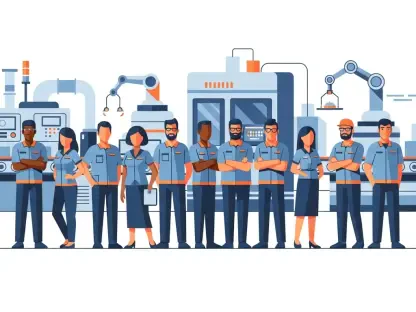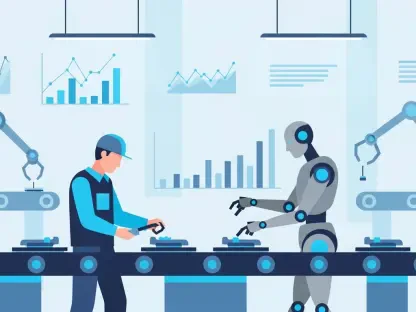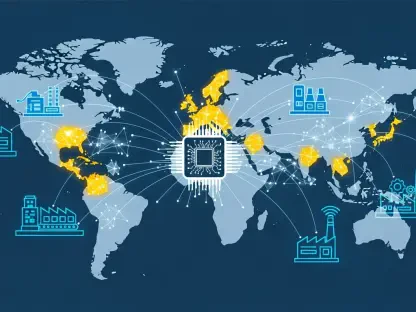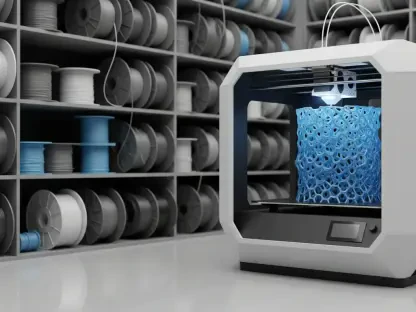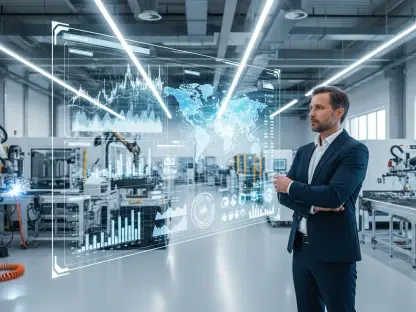As the Fourth Industrial Revolution unfolds, it is radically transforming global labor markets, business models, and necessitating new skill sets for future employment. At the heart of this transformation are groundbreaking advancements in artificial intelligence, robotics, nanotechnology, 3-D printing, and biotechnology. These innovations are causing disruptions that reshape the workplace and dictate the need for strategic adaptation across industries. The World Economic Forum’s comprehensive report, “The Future of Jobs,” highlights these shifts. Its insights reflect the opinions of strategic executives from organizations representing a substantial portion of the global workforce, shedding light on how the next five years may unfold.
Transformative Impacts on Employment
Job Displacement and Creation
The Fourth Industrial Revolution prompts significant shifts in employment due to redundancy and automation. According to the World Economic Forum’s findings, an estimated 7.1 million jobs could be lost, predominantly affecting white-collar office roles. However, as technology evolves, new opportunities are also emerging. Approximately 2.1 million new jobs are projected to arise in specialized fields like computer and mathematical, architecture, and engineering. These new roles present an opportunity to rethink how workforce dynamics evolve and how to harness these advancements to create a more robust employment landscape.
In particular, the information and communication technology sector is poised for robust job growth. This expansion signals a move towards a more technology-driven economy, with increasing reliance on digital tools and platforms. The professional services and media sectors are also expected to see upticks in job creation, reflecting broader shifts in how information is produced and consumed. These developments underscore the need for both individuals and organizations to be agile, innovative, and forward-thinking in their approach to the labor market. They also emphasize the importance of investing in education and training to equip the workforce with the skills required to thrive in these new roles.
Gender Implications in the Workforce
The potential gender implications of these employment trends are significant. The World Economic Forum forecasts a wider employment gap between genders due to the lesser participation of women in expanding STEM fields. This gap underscores the importance of promoting gender equality in the labor force, not only as a social imperative but also as an economic necessity. Women’s underrepresentation in key industries can result in lost talent and potential, hindering overall economic growth and innovation.
Addressing this gap involves active efforts from both public and private sectors to foster inclusivity. Ensuring equitable access to education, training, and career advancement for women in STEM fields is crucial. Organizations can implement strategies such as targeted recruitment efforts to attract female candidates, offering mentorship programs, and establishing policies that support work-life balance. These measures can help bridge the gender gap, leading to a more diverse and innovative workforce. A concerted effort towards inclusivity will not only strengthen economic outcomes but also drive social progress.
Strategic Responses and Initiatives
Reskilling and Workforce Mobility
In response to the rapid changes introduced by the Fourth Industrial Revolution, companies are emphasizing reskilling their existing workforce as a primary strategy. Reskilling involves encouraging workforce mobility and job rotation, targeting female and foreign talent to diversify skills across industries. Apprenticeships are gaining popularity as an effective means to combine learning with hands-on experience, which can bridge the skill gap required by new technological advancements. Additionally, apprenticeships help forge strong ties between educational institutions and industries, ensuring that curriculum and training programs are aligned with current and future labor market needs.
Despite the clear need for reskilling, hiring short-term or virtual workers as a less favored approach reflects the challenges and uncertainties associated with temporary employment. Companies invest in their long-term human capital to ensure stability and resilience against the shifting tides of technological and economic change. Therefore, fostering a culture of continuous learning and development within organizations is becoming increasingly critical. Employers who prioritize employee skill enhancement are better positioned to lead in this new industrial landscape.
Building a Future-Proof Workforce
Governments and businesses alike face the pressing task of anticipating and addressing the changes spurred by this Industrial Revolution. Proactive measures are vital in mitigating risks associated with unemployment and inequality. The World Economic Forum emphasizes that companies dedicated to future workforce planning, particularly those investing in reskilling and diversifying talent pools, stand to benefit significantly from such foresight. Strategic preparation involves not just adapting to change but actively shaping the workforce of tomorrow.
Furthermore, collaboration between governments, educational institutions, and industries is essential to ensure comprehensive and effective workforce transformation. Policymakers can cultivate an environment conducive to innovation by introducing incentives for organizations investing in education and skill development. Joint efforts between public and private sectors are foundational to creating opportunities for lifelong learning, thus reinforcing workforce adaptability. By embracing these strategies, societies can harness the full potential of the Fourth Industrial Revolution.
Embracing the New Industrial Era
As we experience the unfolding of the Fourth Industrial Revolution, we’re witnessing a transformative impact on global labor markets, business models, and the requisite skill sets for future jobs. At the core of this revolution are significant advancements in technologies such as artificial intelligence, robotics, nanotechnology, 3-D printing, and biotechnology. These groundbreaking innovations are causing substantial disruptions, reshaping workplace dynamics, and demanding strategic adaptation within industries. The World Economic Forum’s extensive report, “The Future of Jobs,” provides valuable insights into these shifts. Offering perspectives from strategic executives at organizations that account for a major portion of the global workforce, the report sheds light on expectations for the coming five years. The insights suggest a rapid evolution in the job landscape, urging both individuals and organizations to adapt to stay relevant in this dynamic environment driven by technological innovation and change.


